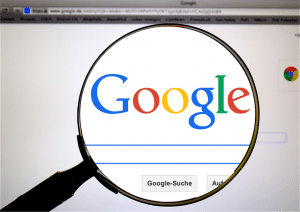Duplicate Images and Google
Do duplicate images impact ranking? One study says yes...

Back in July, the SEO firm Reboot released a study that attempted to look at the impact that duplicate images have on website rankings in Google.
The results were fairly conclusive: Unique images help both your Google Image Search ranking and your Google Web Search rankings.
This is in contrast to what Google said back in 2013, when it claimed it doesn’t penalize for duplicate images. That said, the two aren’t mutually exclusive as it may not directly penalize such sites, but it may favor sites with original content in a way that feels like a penalty for duplicate content.
Regardless, the results seem to indicate that sites with original images do better in Google than those that don’t. While it’s impossible to determine the strength of that effect, it puts a new light on the use of stock images and image misuse.
But before you run off and start trying to fill your site with original images or fight infringements of your work you were previously ignoring, it may be wise to take a breath and realize that, while duplicate images may have an impact, it may not be where you want to focus your time.
The Experiment

The experiment itself was actually fairly straight forward. Reboot set up 10 sites, all with co.uk TLDs, on the same network but with different geographic locations. It then provided each site with comparable content on the topic of “Preotrolite”, a completely
Five of the sites were then given original images they took and the other five were given duplicate images from a stock photography website. They then tracked the ranking of the ten sites over a three-month period.
The results, though not perfect, showed clear favoritism to sites that had original images. For most of the observation period, 80% of the sites were in positions that favored the hypothesis. While there were examples of sites with duplicate images outranking sites with original ones, they were a minority.
This was carried over t Google Image Search where, in one example, none of the top 12 images were duplicates. Instead, the highest-ranking duplicate image was 14 with the bottom 20 being
While the results are certainly interesting, there are three limitations to the study that are worth noting.
- Size of Impact: The study itself acknowledges that the size of the impact is likely small. It was only noticeable after stripping out every other variable possible. If the study had mixed in other variables, including duplicate text content, it is likely things would have gone very differently.
- Small Sample Size: Though 10 sites is a good number for a small study, it’s also possible that the results could have been coincidence. This is backed up by the fact that the results were not perfect, meaning there could be an element of chance at play.
- This is Google: Talking about the Google algorithm is akin to discussing shifting sand. Google’s algorithm is always changing and, while these results were valid in July, they may not be today… or tomorrow.
Still, the study gives a pretty clear indication that sites with unique and original images do better than duplicate ones. However, what we do with this is the real question and, to that, there are two approaches.
What Do We Do?

The study was meant as a cautionary tale against the use of stock photography. Whether it’s free stock photos, such as from Pixabay, or paid ones, such as from Shutterstock, it’s likely that dozens or hundreds of other sites have the image you’re using.
According to this study, this means that your site could be disfavored over similar sites that have original images.
However, this is also an issue for sites that do post original images. If those images are copied and shared widely, they too could be seen as duplicate. Though Google does try to make an educated guess as to who the originator of a piece of content is, it’s far from perfect.
While this is an issue for bloggers that create original images, it’s a bigger issue for storefronts that often have their images copied by either competitors or collaborates. Whether with or without permission, the reuse of product images is widespread on the internet.
However, it’s probably best to not overreact to this. The study itself admits that the impact is likely small and that there are much larger things that impact your search ranking. It’s probably not worthwhile to abandon stock photography or start chasing every image infringer (if you weren’t doing so for other reasons already).
Instead, it makes more sense to make minor adjustments. If you see easy opportunities to add original images, do so. If you see images that are infringements and can get them removed quickly, do so. But if your main focus is on SEO, you’re most likely still better off focusing your attention elsewhere.
Bottom Line
In the end, this is an interesting study that indicates that there is clearly some value to original images. The amount of that value is likely small, but it does make it worth looking for easy opportunities to include more original visual content on your site and to minimize reuse of those images.
That said, it’s not worth going crazy over. If SEO is a primary concern for you, your focus on dealing with duplicate content should still be text works and, likewise, you should focus on creating valuable, and original text content for your sites that is of good quality.
On this site, for example, the top five ranking pages in Google all have stock images, what serves as the major draw is the text content and popular search terms.
And that fits what we know about Google. Google’s algorithms may be a shifting sand dune, but the company has made it clear what it wants. It may adjust how it identifies quality content, but the goal has been consistent.
With that in mind, this study is something to be very aware of, but not necessarily lose your mind over. If anything, it’s more important to pile this as evidence that we should take what Google says about its algorithm with a grain of salt as it often turns out to be either half-true or outright untrue.
Want to Reuse or Republish this Content?
If you want to feature this article in your site, classroom or elsewhere, just let us know! We usually grant permission within 24 hours.
